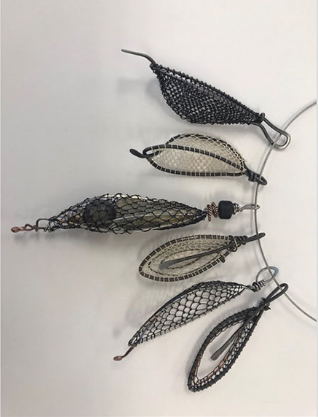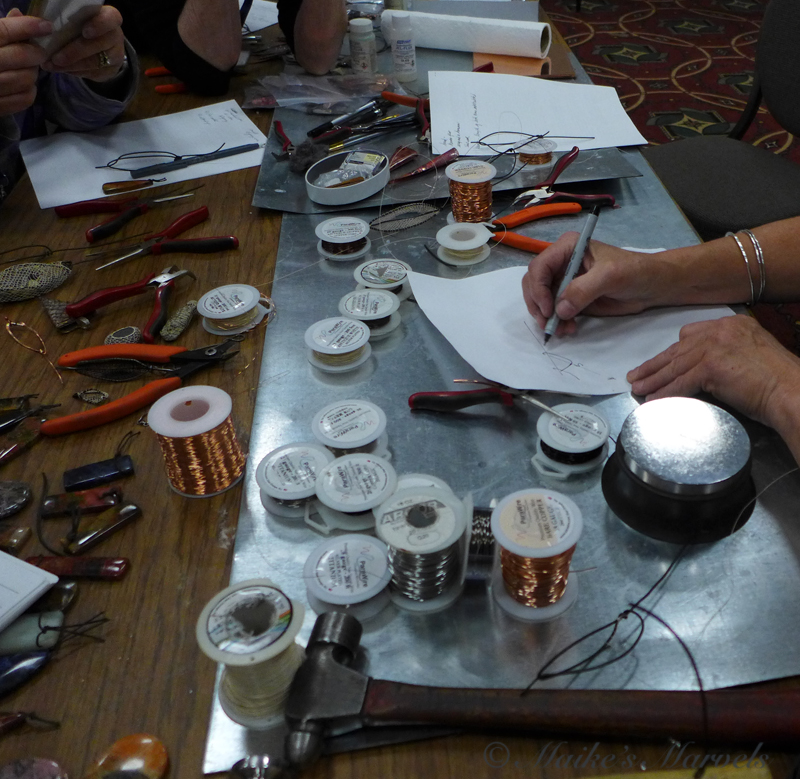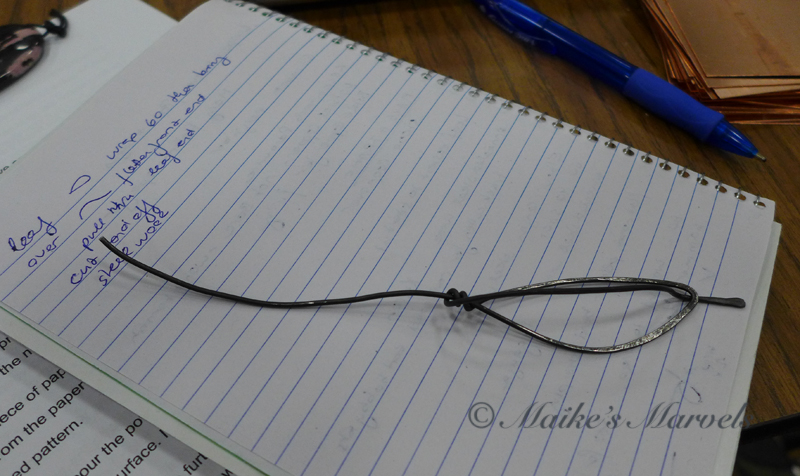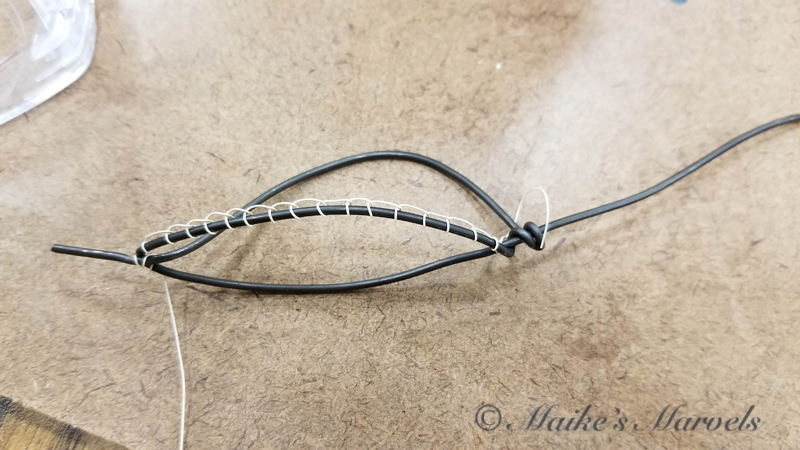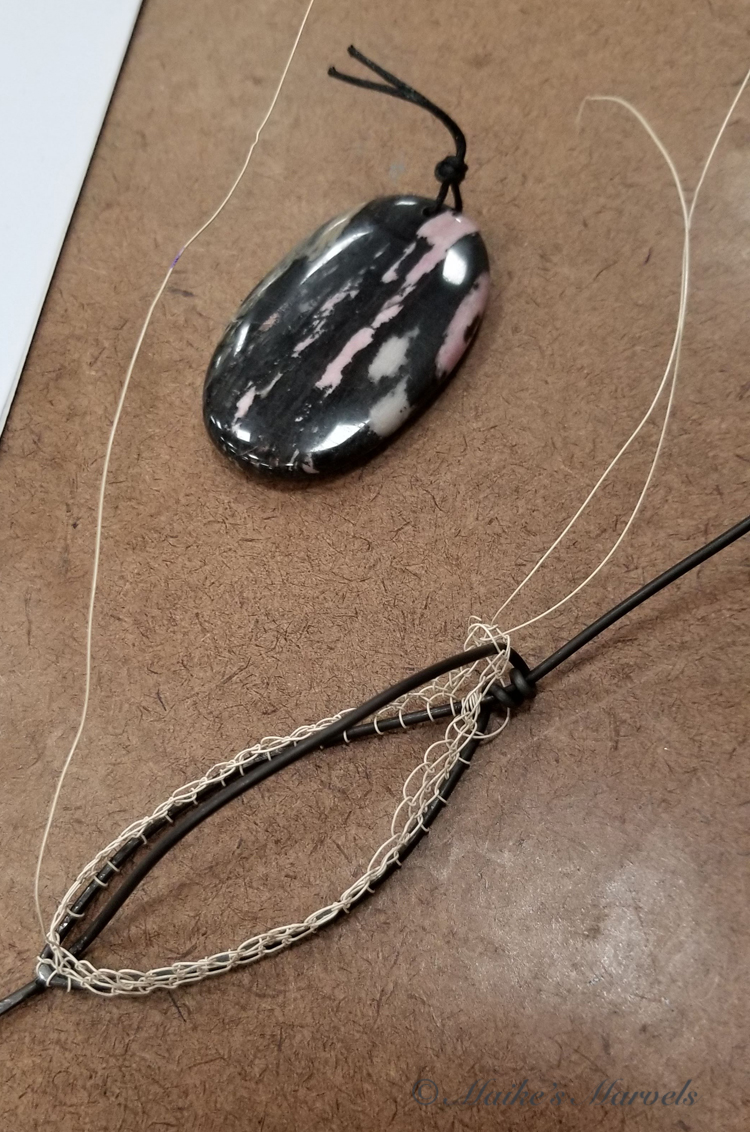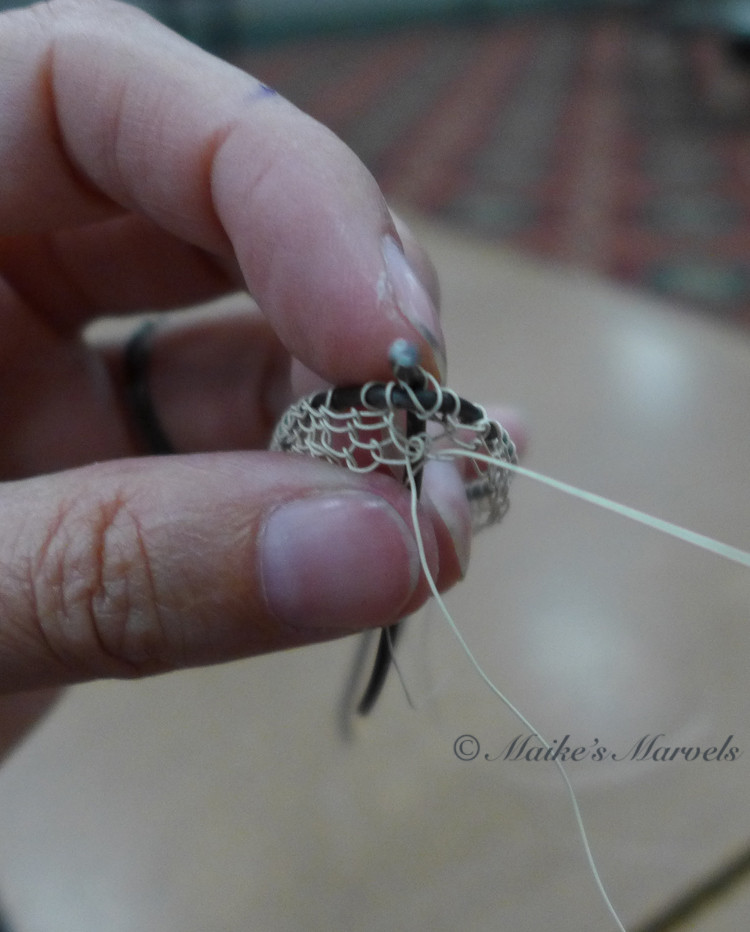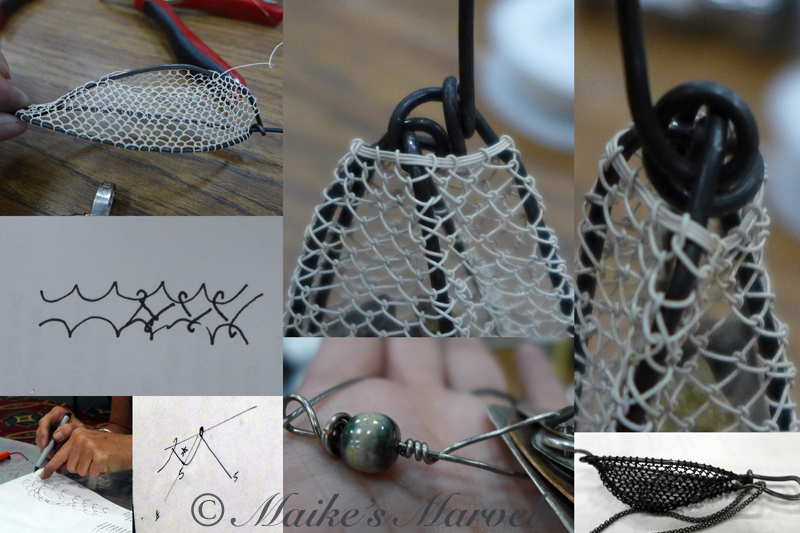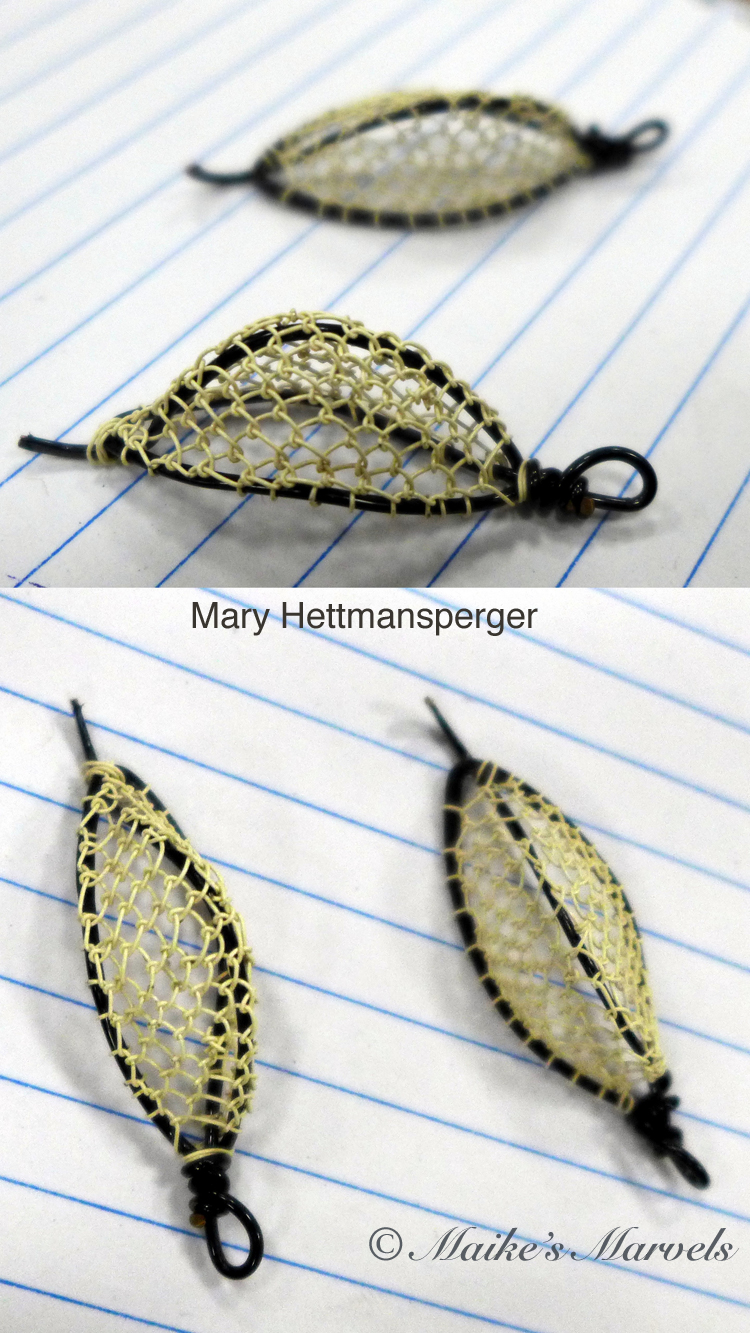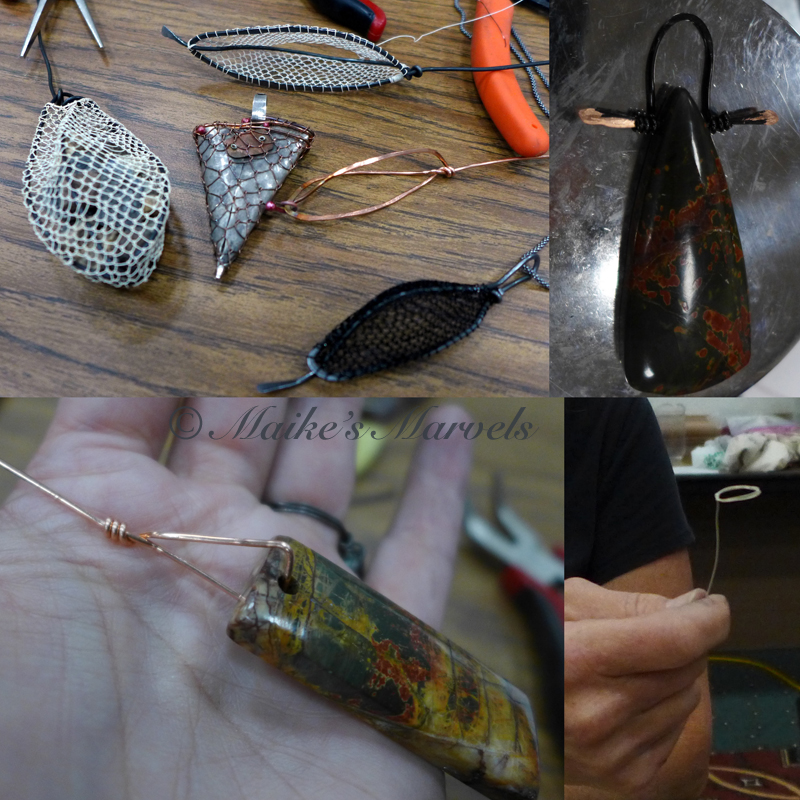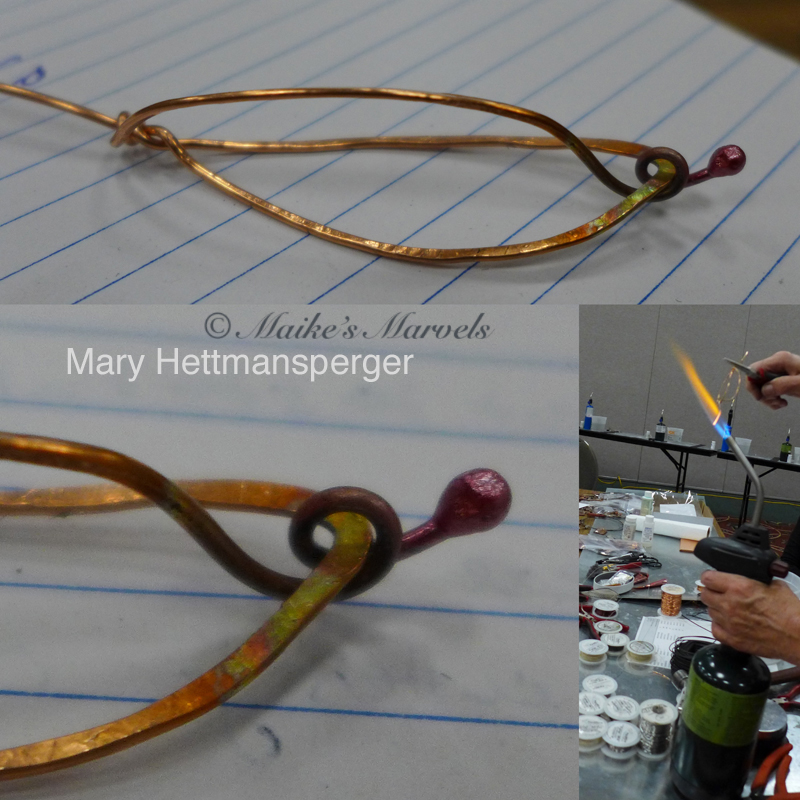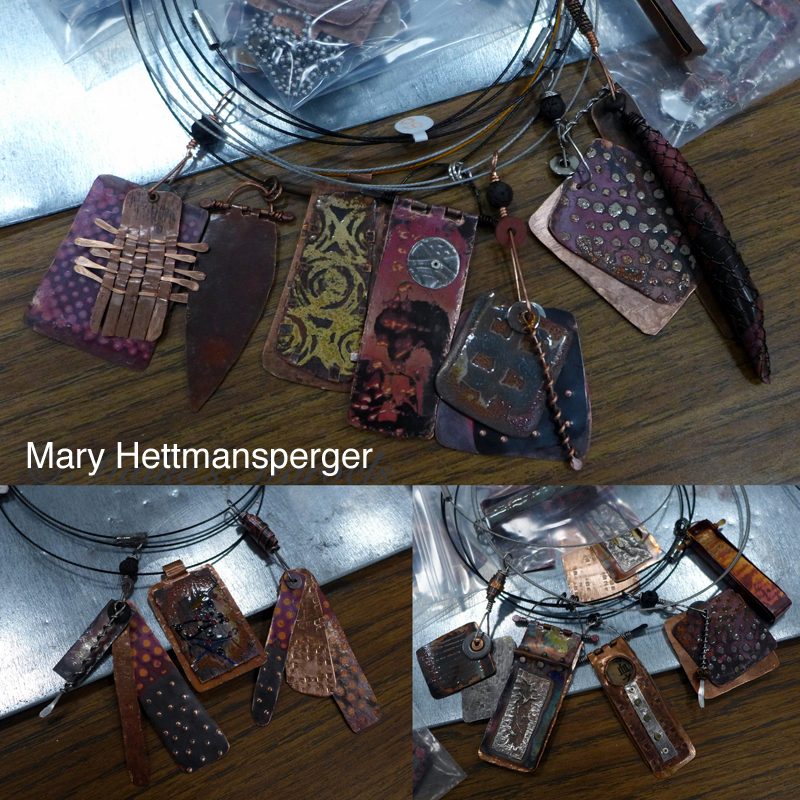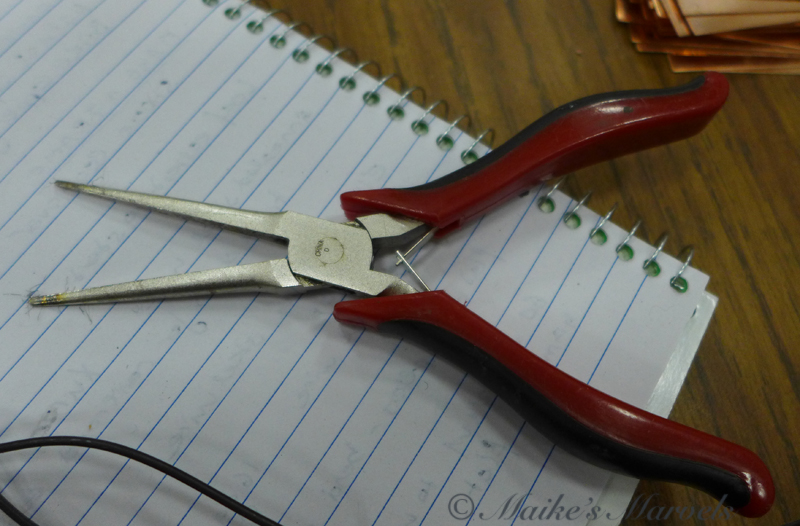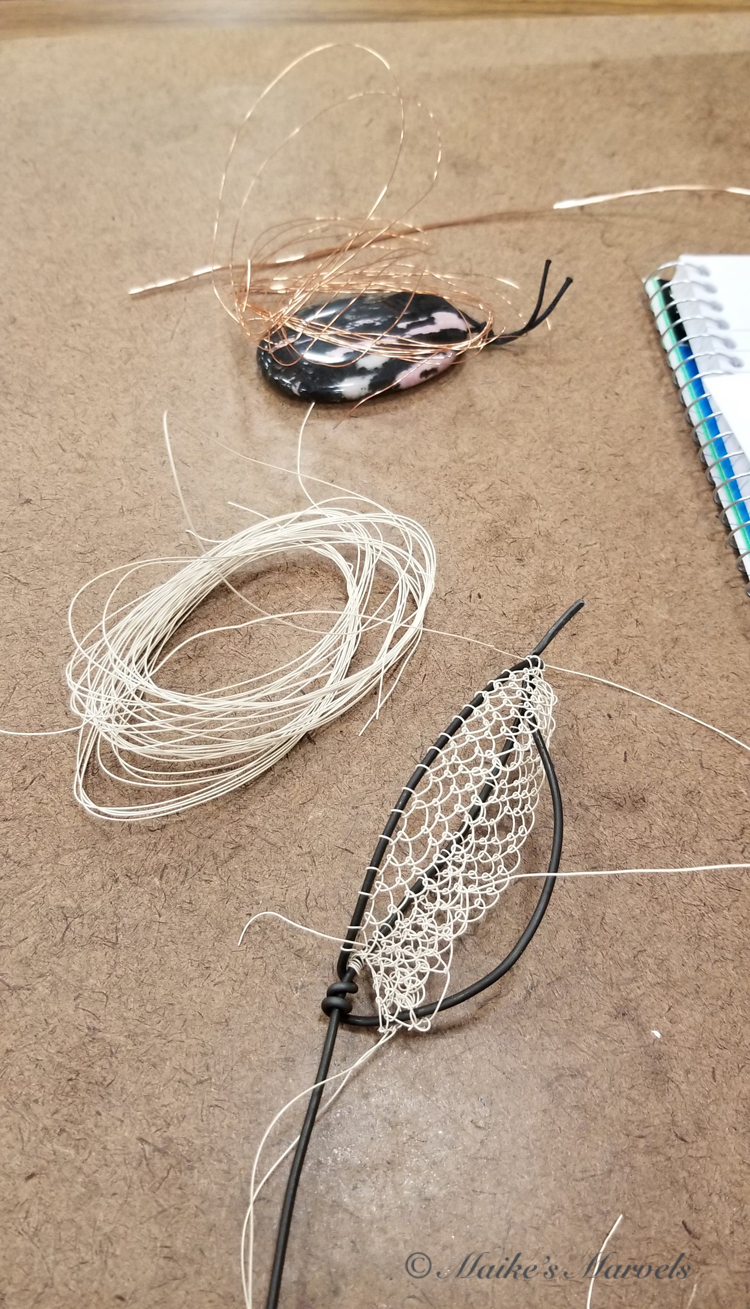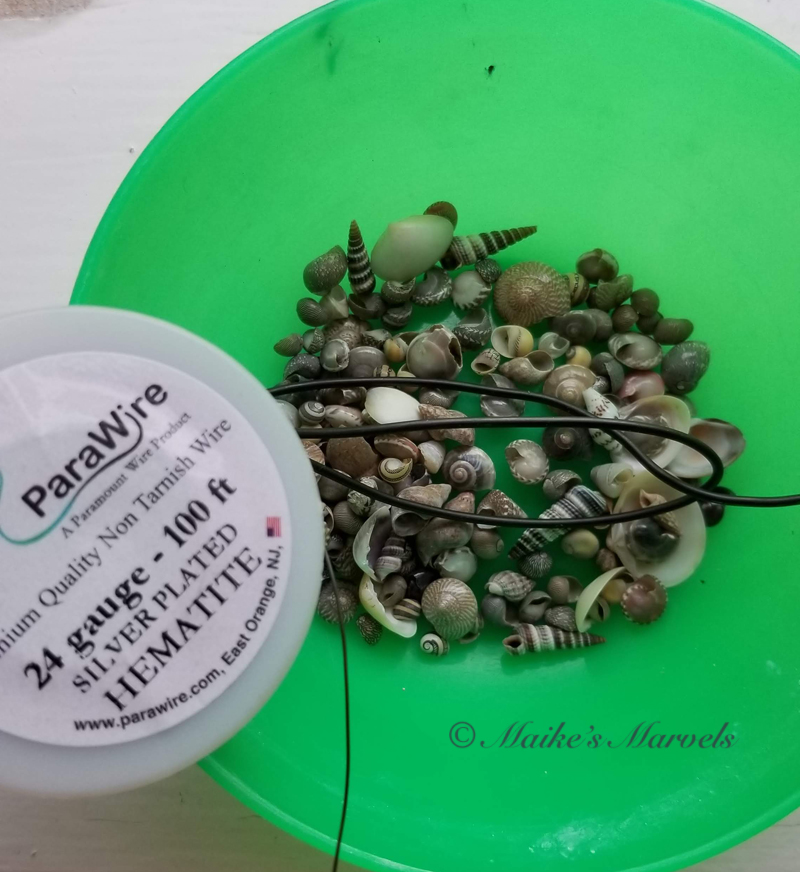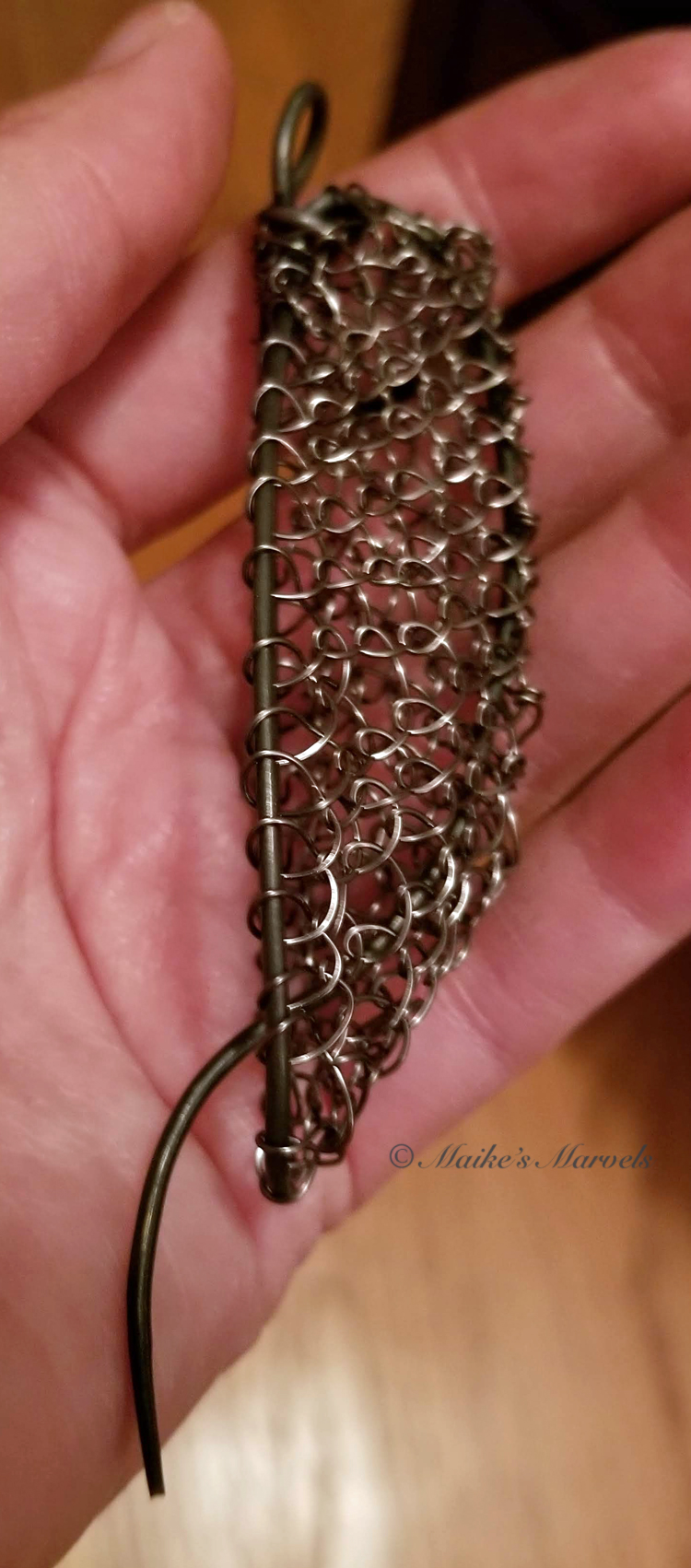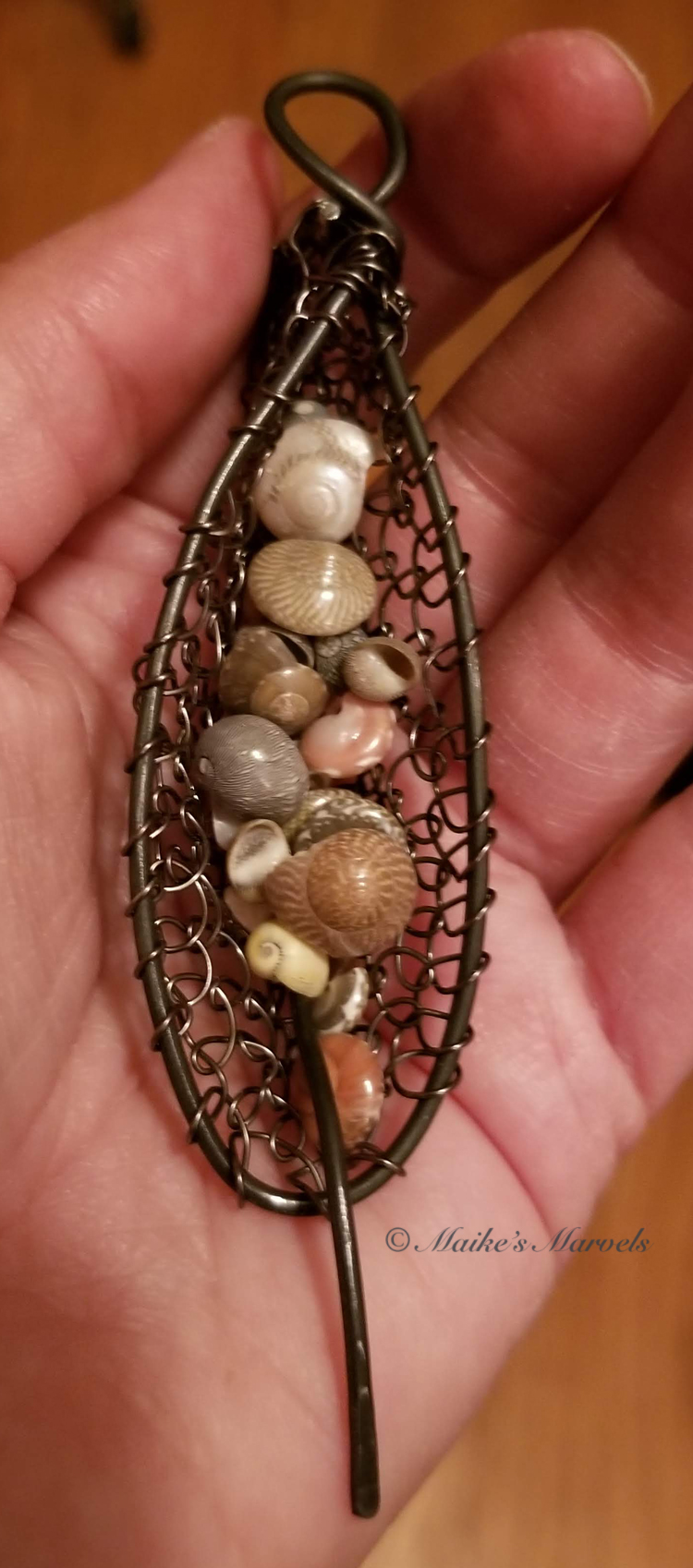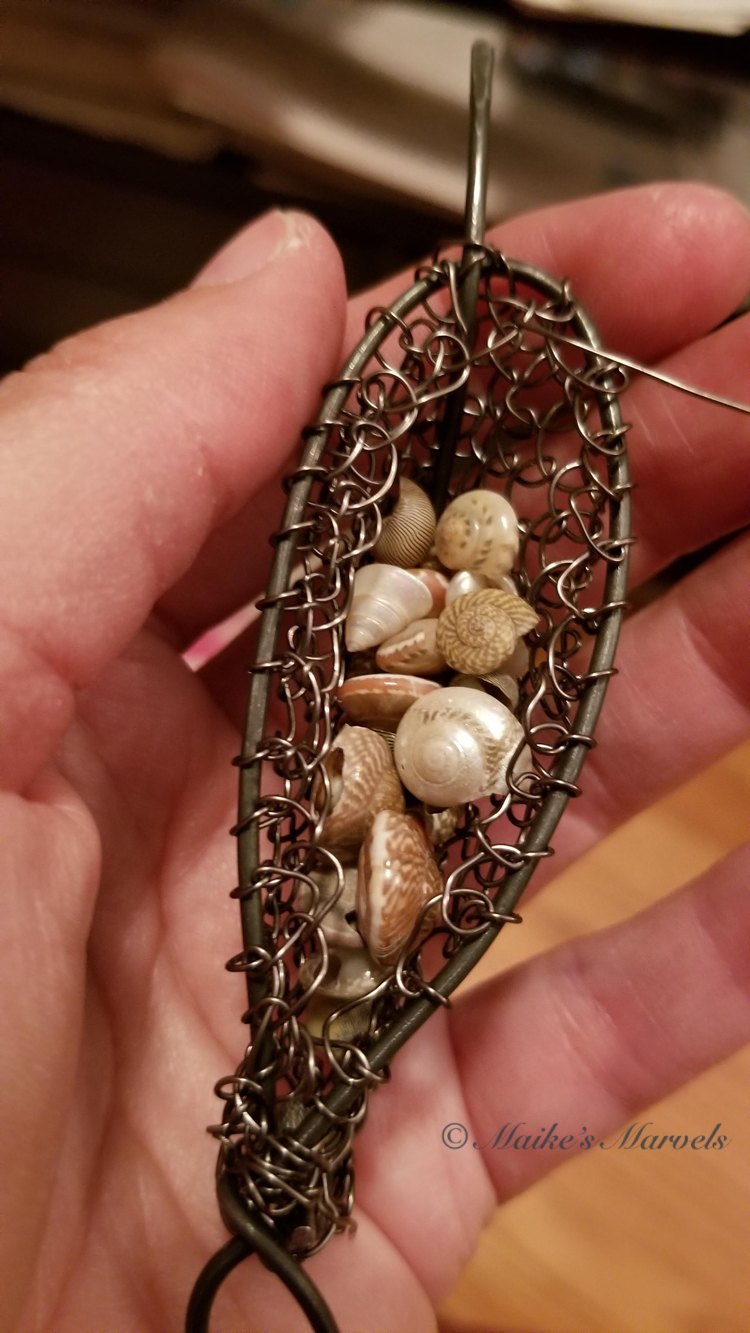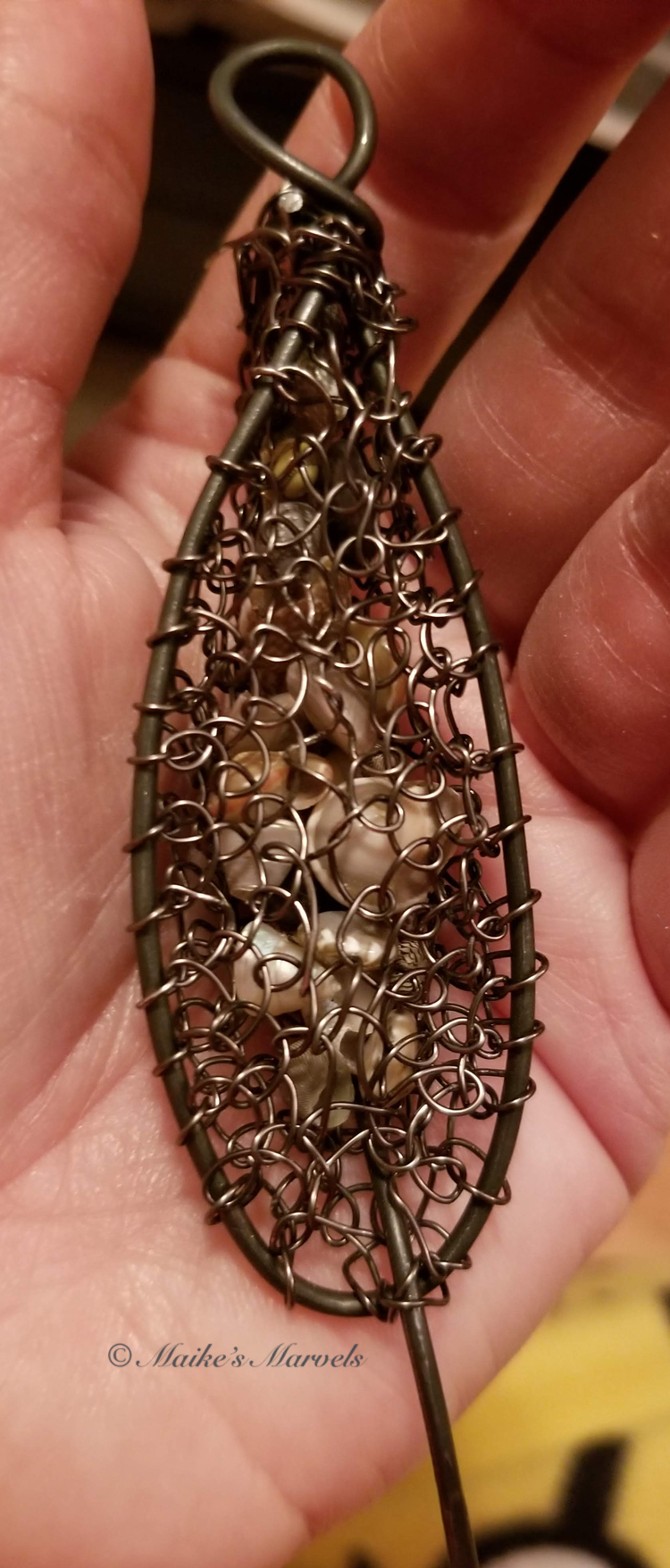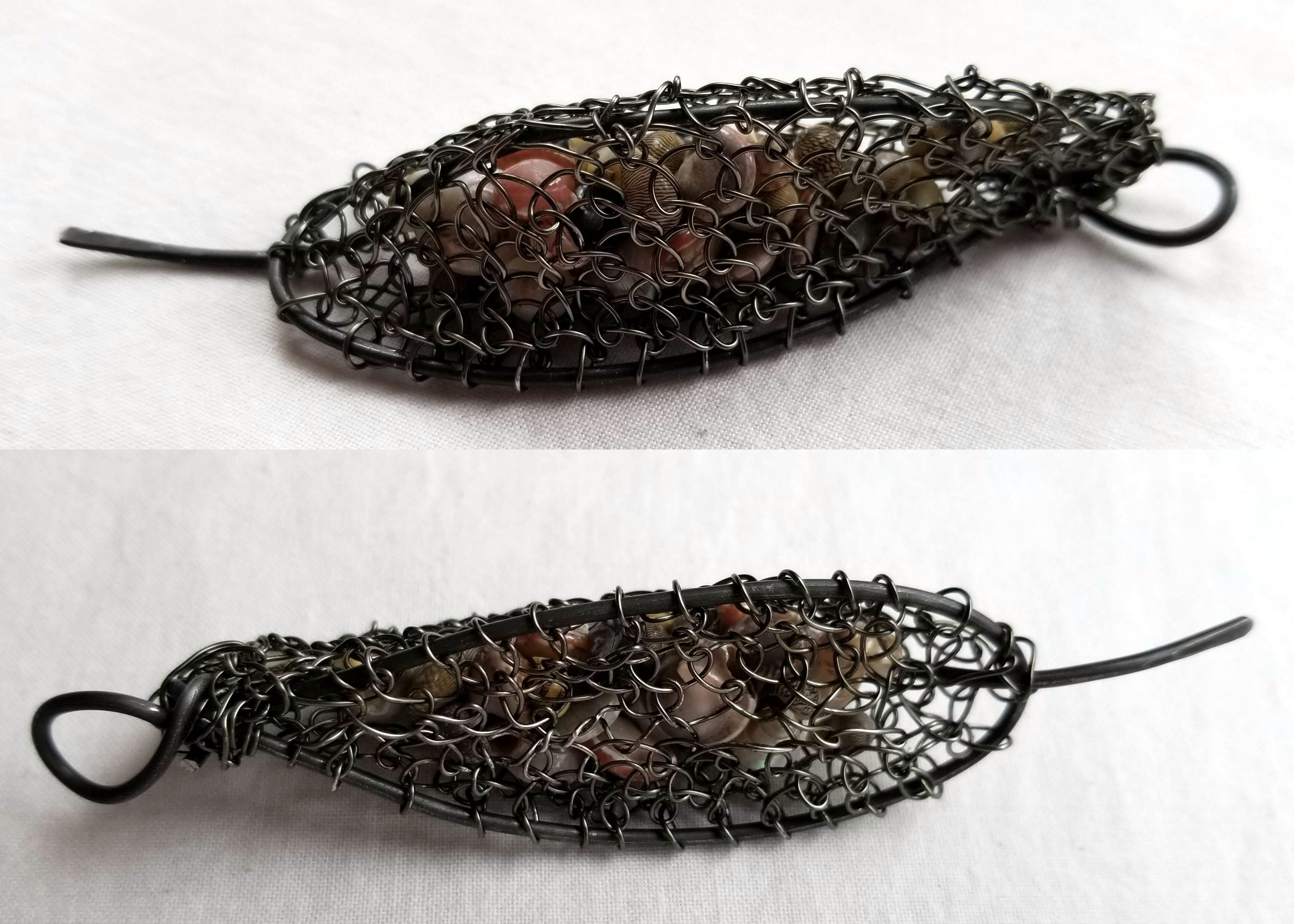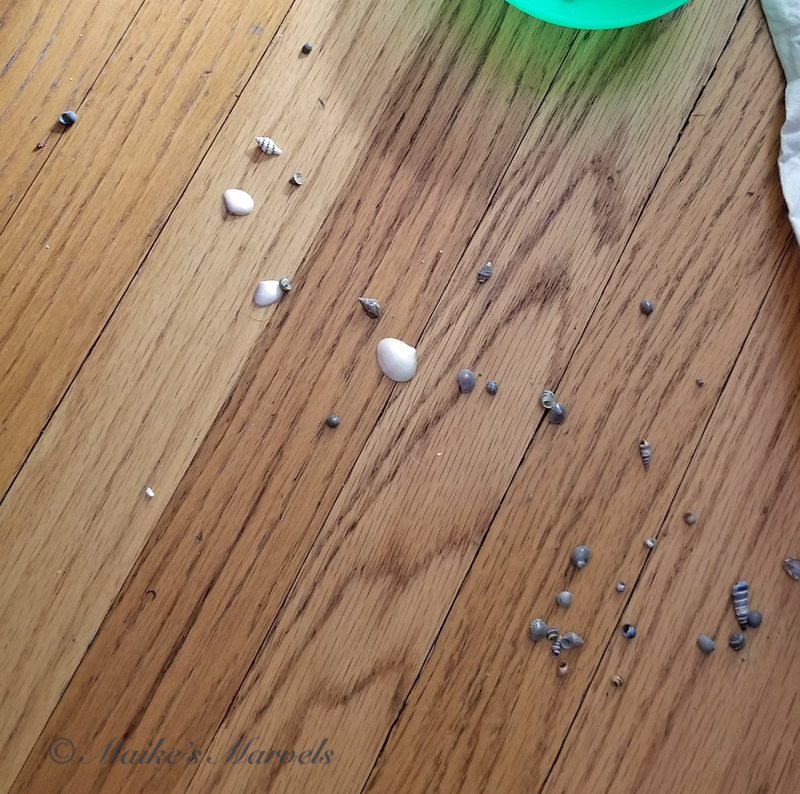Maikes Marvels Creations
Making Pods
When I looked at the Bead & Button Show Schedule, none of Brenda’s classes worked for me, but Looped Leaves, Pods and Cages caught my eye. The description read: “Students will use steel, and craft and copper wires to create shapes that include a knotless netting. Fine wire will be used to create the layer of looping or knotless netting. Many wire options and color selections will be available. Students will make several pendants and have plenty of material for making more on their own.” The picture mesmerized me, so I signed up.
On Friday, I sat down with several other women to learn this new technique. The others were already familiar with Mary Hettmansperger’s work, but I had not looked her up prior to the class. She introduced us to steel wire, which of course made me a fan!
We learned how to make a pod shape, that we would then encase with wire.
After a thorough demo and as we observed the corrections she gave us, we started on our first row.
It took a long while to get the hang of it, and as I do in knitting with wool, I pulled the wire too hard on the first round.
Nonetheless, a rhythm established itself, and we wove our way around the pods.
Mary Hettmansperger conducts workshops, sells and exhibits her work throughout the U.S. at fiber conferences, bead societies and guilds, basket guilds, state and international conferences.
She has been published in Beadwork, Bead and Button, Art Jewelry, Shuttle Spindle, Quilting Arts, and other magazines. Her books are: Heat color set and fire, Mixed Metal Jewelry Workshop: Combining Sheet, Clay, Mesh, Wire & More, Wrap, Stitch, Fold & Rivet, and Fabulous Woven Jewelry. She owns Gallery 64 in Wabash Indiana.
Mary also gave each of a us a Jasper cabuchon, and showed us techniques on how to make wire hangers for these prior to encasing them in our new weaving method.
I also learned how copper gets those ball endings, which was demonstrated with colorful balls jokes.
Since there was time, Mary also showed us how to torch copper sheets to create different color effects and how to form them into shapes. I wasn’t feeling the torch vibe so I decided to keep on weaving, but other students jumped right in. It was a nice bonus to know how some copper jewelry gets their beautiful coloring, and Mary’s pieces are stunning.
Of course examining the tools of the trade is always fun, and I am curious where to find these super-long pliers.
This is as far as I got in class.
We were gifted extra wire (28-gauge Parawire), for the curious) to finish our projects.
I ordered her recommended book for additional inspiration, and am eagerly awaiting leafing through those pages. Meanwhile, practice makes perfect so I decided to make another pod at home. The minute I saw the class I envisioned filling the pods with something, and my first try became seashells I had from an old craft sale.
I liked the hematite color I had on hand, which was the thicker gauge I had seen on Mary’s samples as well. This thickness is a bit more challenging, but also ensured none of the super-tiny shells would fall out. The weaving is perfect company to watching bad plot movies.
I filled the pod with the shells.
Then I had to pay attention to how I was holding the pod, since each wiggle made shells scatter.
A few hours (and Netflix episodes) later, I had a closed pod.
I really like the effect, although the photo doesn’t quite get the tone-on-tone nuance.
I did have some sweeping to do the next day!
Little did Mary know, an obsession was created. I’ll share more projects soon!


